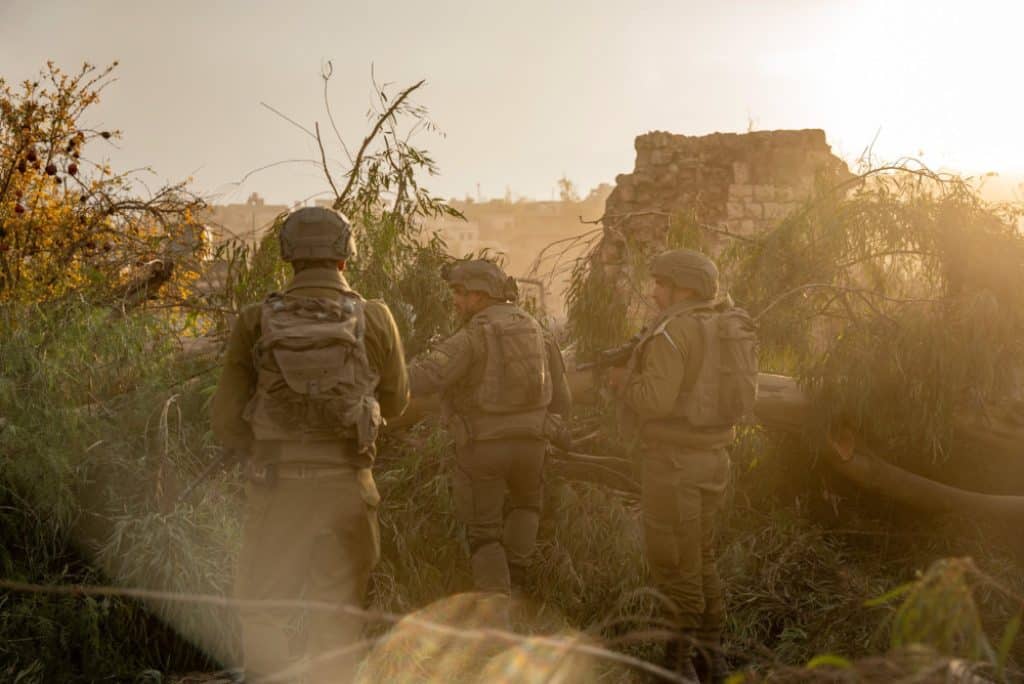
On November 12, the Israel Defense Forces (IDF) said that the Israeli Air Force (IAF) has “dismantled a majority of Hezbollah’s weapons storage and missile manufacturing facilities located under the Dahieh district” of Beirut over the last month and a half. This assessment is a result of Israel’s numerous precision airstrikes on this neighborhood where Hezbollah has its headquarters and has built up terrorist infrastructure. The IDF’s statement came as Hezbollah continued to fire large barrages of rockets at Israel, and Iranian-backed proxies attempted to attack Israel from multiple fronts.
The IDF said that over the past 20 years, “the Hezbollah terrorist organization has established dozens of weapons production sites and storage facilities in the heart of the Dahieh district, the organization’s governing stronghold.” These facilities were used to produce and store missiles, among other munitions. One site the IDF pointed to is located near a school. “This site was intended to produce various weapon components, including long-range precision missiles capable of striking anywhere in Israel. These missiles are a central element of Hezbollah’s precision missile project, funded by Iran,” the IDF said.
Hezbollah was estimated to have up to 150,000 projectiles before its attacks on Israel began on October 8, 2023. Reports in Israeli media previously asserted that Hezbollah may have lost up to 80 percent of its rockets. Pro-Iranian media, such as Al-Mayadeen, sought to highlight increased Hezbollah rocket fire in recent days, including long-range attacks that targeted central Israel.
Strikes in Beirut have increased in the last week after what appeared to be a lull in early November. The Israel Air Force said it hit “command centers, weapons production sites, and additional Hezbollah terrorist infrastructure” on November 12. Overall, Israel carried out an estimated 100 strikes on targets in Lebanon between November 11 and 12. In several cases, the attacks sought to hit rocket launchers used by Hezbollah to target areas in northern Israel. The IAF’s most recent efforts were in response to around 90 rockets the terrorist group fired in a series of barrages on November 11.
In southern Lebanon, Israeli ground forces also continue to chip away at Hezbollah, searching villages and rural areas near the border to uncover munitions and sites used by the group. At one location, the IDF said it found “ready-to-fire launchers, and confiscated large amounts of weaponry and terrorist equipment, some of which were found within civilian structures.”
The IDF’s 36th Division, one of at least four divisions with units operating in Lebanon, uncovered a Hezbollah bunker that was “hidden under a cemetery in southern Lebanon,” the Israeli military said on November 10. “Within the compound, the troops located command rooms, living quarters, and weapon storage facilities filled with arms and combat equipment—ready to be used to infiltrate into Israel.” An aerial photo of this site appeared to show it was in the village of Maroun al-Ras.
The IDF investigated the bunker’s tunnel shafts, which extended almost a mile in various directions. The underground site was also around a mile from Israel’s border. After the investigation, the IDF brought in cement mixers and construction equipment and poured 4,500 cubic meters of concrete into the terror compound. Sealing Hezbollah’s tunnels and bunkers in this manner is one method the IDF uses to eliminate these sites. Another technique is blowing them up; however, doing so would have damaged numerous civilian homes because the tunnel went under parts of the village. Detonating the tunnel would also have damaged a nearby cemetery.
As Israel’s operations in Lebanon continued, Hezbollah increased its attacks on northern Israel. The group’s rocket fire had decreased to around 100 projectiles launched into Israel during the first week of November. However, on November 11, at least 200 projectiles crossed the border. In addition, Hezbollah targeted an area near Tel Aviv with three missiles. Hezbollah maintains the capability to fire large numbers of projectiles simultaneously, including barrages of between 50 and 90.
Hezbollah also continues to launch drones at Israel. On November 12, drones entered Israeli airspace several times. Several were intercepted at around 2 pm and 5 pm in northern Israel. Other Hezbollah drones struck areas in Israel that day, including one that hit a kindergarten near Haifa.







